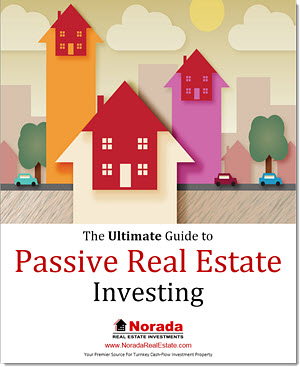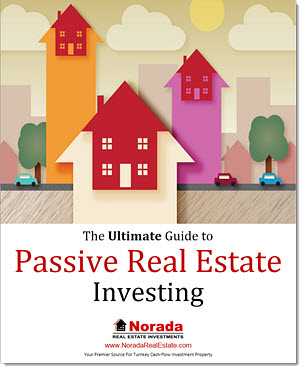Thinking about putting your money into real estate? If you’re looking for sunshine, growth, and solid property investments, the Sun Belt is calling your name. Specifically, I’ve found Dallas and San Antonio in Texas, along with Jacksonville, Cape Coral, and Port St. Lucie in Florida, to be particularly compelling in 2025 for investors seeking strong returns and steady appreciation.
This isn’t just a feeling; it’s backed by solid data showing robust job markets and a consistent flow of people moving in. While the real estate market nationwide is seeing shifts, these five cities are holding their own and often outperforming.
As an investor myself, I’m always on the lookout for markets that offer balance – a mix of current opportunities and long-term potential. The Sun Belt cities I’ve highlighted tick those boxes. They’re attracting new residents thanks to lower living costs, favorable tax environments, and, let’s be honest, great weather. While some of us might be expecting a dramatic price surge across the board, the reality for 2025 is a bit more nuanced.
We’re seeing inventory levels increase, which can be a good thing for buyers and investors looking for better deals. Interest rates are becoming more stable, creating a more predictable environment. It’s a dynamic picture, but one that favors smart, informed decisions. This article will break down exactly why these cities are worth your serious consideration, digging into the numbers, the lifestyle factors, and the potential risks so you can invest with confidence.
Why the Sun Belt Still Shines for Investors
The appeal of the Sun Belt has only grown stronger, especially after the pandemic. People are moving in droves from higher-cost, densely populated areas seeking a better quality of life and more affordable living. Think about it: no state income tax in Texas and Florida, abundant sunshine, and generally lower housing prices compared to places like California or the Northeast. This migration has fueled consistent population growth, which directly translates into demand for housing – both for sale and for rent.
In 2025, we’re seeing a slight cool-down in the national housing market, with prices stabilizing in many areas. However, the Sun Belt continues to show resilience. The key drivers are strong job markets and continued population influx. We’re looking at job growth rates that are often higher than the national average, supported by diverse industries like technology, healthcare, manufacturing, and tourism. This economic stability keeps people employed and able to afford homes.
For folks new to real estate investing, these cities often present a welcoming entry point. Median home prices are generally below those of major coastal metros, meaning you can potentially acquire properties with more favorable cash flow from rentals. The forecast for interest rates around 6% in 2025 is also a positive sign. While inventory has increased nationally by about 36% year-over-year, this often means more choices and potentially better negotiation power for investors. The focus for many is on single-family rentals, which tend to offer steady income, and in these cities, you can often find properties well under the $400,000 mark.
5 Hottest Florida and Texas Markets for Real Estate Investors in 2025
To give you a quick idea of where these markets stand, here’s a look at some key figures for late 2025. Keep in mind that these are estimates based on current trends and data from sources like Zillow and Redfin.
| City | Median Home Price (2025 Estimate) | Year-over-Year Price Change | Estimated Population Growth Rate | Estimated Rental Yield |
|---|---|---|---|---|
| Dallas, TX | ~$425,000 | ~0% | ~1.7% | ~6.5% |
| San Antonio, TX | ~$309,000 | ~-3.3% | ~1.6% | ~6.8% |
| Jacksonville, FL | ~$282,000 | ~-4.4% | ~1.2% | ~6.2% |
| Cape Coral, FL | ~$338,000 | ~-10.4% | ~4.1% | ~5.9% |
| Port St. Lucie, FL | ~$383,000 | ~-4.7% | ~2.5% | ~6.0% |
As you can see, San Antonio offers a particularly attractive entry point with its lower median home price. Cape Coral, despite a recent dip in prices, boasts impressive population growth. Dallas leads in median home price but comes with a robust job market. Jacksonville provides a strong balance of affordability and growth, while Port St. Lucie shows consistent appeal for retirees and a solid price point.
Deep Dive: Texas Cities – Engines of Growth
Texas, with its zero state income tax and booming economy, is a major draw for both new residents and investors. Dallas and San Antonio represent two distinct opportunities within the Lone Star State.
Dallas, Texas: The Economic Powerhouse with a Future
Dallas is more than just a big city; it’s a hub for innovation and opportunity. The Dallas-Fort Worth metroplex, one of the largest in the U.S., continues to see strong population growth, estimated at around 1.7% annually in 2025. This isn’t just random growth; it’s driven by a powerful economic engine. Major industries like tech, finance, and logistics are not only thriving but also expanding, attracting companies and skilled workers. We’ve seen significant investments from companies like Tesla, which bolsters the entire region.
The housing market here has shown remarkable stability. While national price growth might be flat or slightly negative in some areas, Dallas experienced a stabilization around the $425,000 median mark in late 2025, even showing a modest uptick from earlier in the year. Historically, Dallas has seen appreciation rates around 3-3.5% annually, and many of its suburbs, like Frisco, have seen even more dramatic spikes.
For investors focused on rental income, Dallas offers solid opportunities. Rental yields typically hover around 6.5%, with vacancy rates kept in check at about 6.5% due to consistent demand. The average rent for a two-bedroom apartment is around $1,800 a month. The area around DFW Airport, in particular, is a hot spot for multifamily investments, with potential ROI reaching up to 10% thanks to the constant flow of business travelers and corporate relocations. Beyond the numbers, Dallas offers a high quality of life with excellent school districts and relatively lower crime rates compared to many other large cities, though traffic can be a challenge. Insurance costs are generally manageable, often averaging around $2,000 per year, a significant plus.
Here’s a quick summary for Dallas investors:
- Population Growth: Consistent at ~1.7% annually.
- Job Market: Strong with major growth in tech, finance, and logistics.
- Investment Focus: Multifamily properties near transportation hubs, suburban single-family homes.
- Rental Yield: Attractive at ~6.5%.
- Key Advantage: Diversified and robust economy.
San Antonio, Texas: Affordability Meets Growing Opportunities
San Antonio offers a slightly different, but equally compelling, investment profile. It’s known for its affordability, which is a huge draw for residents and investors alike. Population growth is steady at around 1.6% annually, bringing roughly 25,000 new residents each year. This growth is supported by a strong job market, particularly in the military sector (due to major bases like Lackland Air Force Base and Joint Base San Antonio) and the ever-expanding healthcare industry. The city also benefits from its vibrant tourism sector, which injects billions into the local economy.
In 2025, San Antonio’s housing market has seen a slight dip in median prices, settling around the $309,000 mark. This 3.3% year-over-year decrease, rather than being a sign of weakness, actually presents a fantastic opportunity for buyers looking for value. Sales volume has picked up, indicating renewed buyer interest in these more accessible price points. Long-term appreciation is predicted to be around 3% in 2026, which is a healthy and sustainable rate.
The rental market here is a sweet spot for cash flow investors. With estimated yields around 6.8% and a low vacancy rate of about 5.8%, properties tend to stay occupied. Average rents for a two-bedroom place are about $1,400 per month. Areas in the northern part of the city (like Northside ISD) have seen significant demand from families. San Antonio also boasts lower crime rates compared to the national average and highly-rated school districts, further enhancing its appeal for long-term renters and homeowners. Insurance costs are also relatively low, often under $1,800 annually.
San Antonio offers these key highlights:
- Affordability: One of the most accessible major Texas cities.
- Key Industries: Military, healthcare, tourism, and growing tech presence.
- Investment Focus: Single-family homes in well-regarded school districts for long-term rentals.
- Rental Yield: Excellent at ~6.8% with low vacancy.
- Key Advantage: Strong demand driven by affordability and stable job growth.
Deep Dive: Florida Cities – Retirement Havens and Growth Corridors
Florida continues to attract retirees and families, driving demand across its diverse cities. Jacksonville, Cape Coral, and Port St. Lucie showcase different aspects of the Sunshine State’s real estate appeal.
Jacksonville, Florida: Logistics Hub with Coastal Appeal
Jacksonville is a major port city and a growing hub for finance and logistics. Its population is expanding at a steady pace of about 1.2% annually, attracting people drawn to its coastal amenities and growing job market. Companies in the finance sector, like Fidelity, have significant presences here, alongside the bustling port operations.
In 2025, Jacksonville’s housing market has seen a price correction, with median home prices around $282,000. This 4.4% year-over-year dip offers a buyer’s market. While overall appreciation has slowed to about 1.3% recently, new developments, particularly along the riverfront, signal potential for higher growth in the coming years, possibly around 5%.
Rental yields in Jacksonville are estimated at 6.2%, with vacancy rates around 7.5%. This isn’t the lowest, but it’s manageable, especially for properties near employment centers or the popular beaches. Average rents for two-bedroom units are about $1,500 per month. The city offers a good balance of amenities and relative affordability within Florida. Crime rates are moderate, and school performance is decent, making it attractive for families. The main risk here, as with all Florida properties, is insurance costs tied to hurricanes. Expect premiums to be higher, potentially averaging $3,500 annually, especially for homes closer to the coast.
Key takeaways for Jacksonville:
- Economic Drivers: Logistics, finance, port activity.
- Market Position: Affordable coastal city with growth potential.
- Investment Focus: Properties near employment centers and beachfront areas for rentals.
- Rental Yield: Decent at ~6.2%.
- Key Consideration: Insurance costs due to hurricane risk.
Cape Coral, Florida: Rapid Growth Faces Market Adjustment
Cape Coral stands out with its impressive population growth rate, estimated at over 4% annually in 2025. This surge is largely fueled by retirees and people seeking a more relaxed lifestyle, drawn to its extensive canal system and sunny weather. The healthcare and construction sectors are key employers here.
However, this rapid growth has led to a significant inventory increase, causing prices to correct. The median home price in late 2025 was around $338,000, reflecting a sizable drop of over 10% year-over-year. While this might seem like a red flag, for investors, it can represent an opportunity to buy at a lower entry point. New construction is also up, which contributes to the inventory. Appreciation is expected to be around 2.9% in the near term, suggesting a period of stabilization.
Rental yields are around 5.9%, which is on the lower side for this list, partly due to the higher vacancy rate at 15.3%. This elevated vacancy might be more suitable for short-term rental strategies (like Airbnb) in tourist-heavy areas, or it could indicate a market that’s adjusting to a faster pace of development. Average rents for two-bedroom units are around $1,600. Cape Coral scores highly on safety, with low crime rates, and offers good schools. The major hurdle, typical for Southwest Florida, is the very real threat of hurricanes, which significantly impacts insurance costs, often exceeding $4,000 annually and requiring a close look at elevation and flood zones.
Cape Coral’s investor profile:
- Population Growth: Very strong at ~4.1% annually.
- Market Dynamic: High growth has led to price correction and increased inventory.
- Investment Focus: Potentially short-term rentals, or long-term holds in appreciating sub-regions.
- Rental Yield: Moderate at ~5.9%, with higher vacancy.
- Key Risk: Hurricane vulnerability and associated insurance costs.
Port St. Lucie, Florida: Retiree Favorite with Steady Gains
Consistently ranked as one of Florida’s top markets for homebuyers and investors, Port St. Lucie embodies desirable Sun Belt living. Its population is growing at a healthy 2.5% per year, attracting retirees and those seeking a quieter lifestyle while still being within reach of major hubs like the Palm Beaches. The local economy is supported by sectors like biotech and logistics, with steady job growth.
Port St. Lucie has seen its median home prices rise steadily, reaching around $383,000 in late 2025. While there was a slight year-over-year dip of 4.7%, the market has shown month-over-month increases, indicating resilience. This city has a strong track record of appreciation, with cumulative gains of nearly 70% over the past five years, significantly outpacing many other markets.
Rental yields here are around 6.0%, which is solid, especially considering the area’s stability. Vacancy rates are around 8%, which is manageable. Average rents for two-bedroom properties are about $1,700 per month. The appeal for retirees and families is undeniable, with excellent safety ratings (one of the lowest crime rates) and top-tier schools. It’s a market that offers a good combination of long-term appreciation potential and decent rental income. Again, hurricane insurance is a factor, with premiums likely around $3,800 annually, but the strong intrinsic appeal of the city balances this out.
Port St. Lucie for investors:
- Growth Driver: Strong retiree and lifestyle migration.
- Market Strength: Proven, consistent appreciation and stability.
- Investment Focus: Long-term holds targeting retiree demographics, condos, and single-family homes.
- Rental Yield: Good at ~6.0%.
- Key Advantage: High quality of life and consistent demand.
Navigating the Real Risks: Climate, Economy, and Beyond
While these cities offer fantastic opportunities, it’s crucial to acknowledge and plan for the risks.
- Climate Risks: This is the big one, especially for Florida. Hurricanes can significantly impact insurance costs, which have been rising, by as much as 20-30% or more in recent years following major storm seasons. In Florida, it’s estimated that 34% of homes are vulnerable to storm surge. Texas isn’t immune; flash floods are a concern. It’s wise to factor in higher insurance premiums and consider properties with elevated foundations or in lower-risk zones. Investing in reliable insurance, including flood coverage where necessary, is non-negotiable.
- Economic Fluctuations: While these economies are strong, they aren’t immune to national or global downturns. Diversifying your real estate portfolio—perhaps across different property types (residential, commercial) or within different cities—can help mitigate risk.
- Vacancy Rates: Florida cities, particularly those reliant on tourism or seasonal residents like Cape Coral, can see higher vacancy rates (8-15%) compared to Texas markets (6-7%). This can impact your net operating income (NOI) if properties sit empty for extended periods. Strategic marketing, competitive pricing, and understanding local rental trends are key.
I always advise investors to conduct thorough due diligence on specific neighborhoods, look at flood maps, and understand local building codes related to wind resistance. Tools that assess climate risk for specific properties are increasingly valuable.
My Personal Take: Strategic Recommendations
Based on my experience, here’s how I’d approach these markets:
- For the Beginner Investor: San Antonio is a fantastic starting point. Its affordability means you can get into the market with a lower initial investment, potentially around $300,000. Focus on single-family homes in family-friendly neighborhoods with good schools. Consider using them for short-term rentals (like Airbnb) initially to maximize cash flow, aiming for yields in the 8% range during peak seasons.
- For the Experienced Investor: Dallas, with its robust economy and demand for housing, is ideal for scaling up. Look into multifamily properties, especially in the suburbs or near major employment centers. The potential for higher ROI (8-12%) is there, particularly if you can capitalize on the slight slowdown in new construction, which can lead to more stable rental income.
- For the Florida Enthusiast: Port St. Lucie offers a great balance. It has a proven track record of appreciation and attracts a stable demographic of retirees and families. Investing in condos or well-maintained single-family homes here could provide a steady rental income and long-term capital gains. The demand is consistent, and the lifestyle appeal is undeniable.
Always remember to stay informed about interest rate changes. If rates continue to moderate, moving towards 5.5%, we could see property values climb by an additional 5% or more in these hot markets by 2026. Local knowledge is also invaluable, so connect with real estate agents and property managers who specialize in these areas. Tools like Redfin’s market heat maps can help you identify emerging neighborhoods.
Ultimately, these five cities represent the vibrant heart of the Sun Belt’s real estate opportunity in 2025. They aren’t without their challenges, but with careful research and a strategic approach, they offer a compelling path to building wealth through property investment. The ongoing migration and economic strength in these regions suggest that they will continue to be prime destinations for years to come.

Download Your FREE Guide to Passive Real Estate Wealth
Real estate investing has created more millionaires than any other path—and this guide shows you how to start or scale with turnkey rental properties.
Inside, you’ll learn how to analyze cash flow and returns, choose the best markets, and secure income-generating deals—perfect for building long-term wealth with minimal hassle.
🔥 FREE DOWNLOAD AVAILABLE NOW! 🔥
Smart Investors Are Buying Turnkey Deals in These Hot Markets
From Birmingham to San Antonio, savvy investors are locking in cash-flowing rental properties in high-demand cities—before prices rise and inventory tightens.
Norada Real Estate offers exclusive access to turnkey deals in Cape Coral, Charlotte, Cleveland, Dallas, Indianapolis, Jacksonville, Kansas City, Nashville, Port Charlotte, and more—perfect for building passive income and long-term wealth.
🔥 HOT NOVEMBER LISTINGS JUST ADDED! 🔥
Talk to a Norada investment counselor today (No Obligation):
(800) 611-3060






